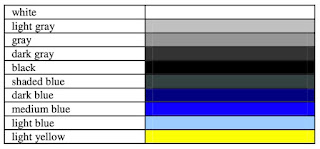By Dipeeka Luitel
Introduction
Hello, web design enthusiasts! Ever noticed how websites vary globally? It's more than language; cultural factors significantly shape web design. A comparative study of three papers - by Kondratova and Goldfarb, Sun, and Alexander et al. - offers insights. This blog post highlights the key findings and implications from these studies and examines how cultural aspects can impact our daily web experiences.
1. Colours Speak Louder Than Words
This study by Kondratova and Goldfarb revealed that colours play a massive role in how different cultures perceive websites. The authors looked at web design preferences across 26 countries and focused on colour use, fonts, image frequency, and layout.
Observations and Findings:
- Although some colours like white, grey, and black are universally popular (no surprise there!), each country has its unique colour preferences.
- Countries that use reds in their colour scheme are less likely to use green and vice versa. Vibrant colours, such as red, can have diverse cultural meanings. In some places, it's the colour of joy and celebration. In others, it's a stop sign, signaling caution or even danger.
- To create a more user-friendly online experience, it's important to customize the colour scheme of websites for different country-specific domains.
It's also interesting to note that different cultures don't just associate various meanings to colours, but they might even perceive them distinctly! Historically, in the Japanese language, the term ‘ao’ encompassed both blue and green. This was because the language initially recognized only four primary colours: black, white, red, and blue. This linguistic interpretation of colour has real-world implications, as seen in Japan's traffic lights, where the universally recognized green "go" signal uses the bluest possible shade of green to meet international driving standards.
It is important for web designers to understand cultural interpretations of colour to enhance the adaptability of websites across different cultures. In the digital world, colours are more than just aesthetic choices—they express the unique visual and cultural experiences of users worldwide!
2. It's Not Just About Colours
Sun's work also emphasized the importance of colour in web design. However, it broadened the scope to explore how cultural markers like national symbols, colour schemes, and spatial organization play a role in the design of multilingual websites. This research centres on two major software companies, Lotus and Adobe, comparing their global and country-specific web pages as shown in Figure 3.
Observations and Findings
- Lotus and Adobe showed varying degrees of cultural adaptation in their country-specific websites. Lotus had significant differences in design, while Adobe's changes were primarily linguistic.
- Users tend to favour usability over cultural elements in web design if it comes to a trade-off, although cultural preferences do influence user evaluations.
- The study's conclusions are drawn from a small, predominantly male sample, raising questions about their representativeness.
- Effective localization involves adapting visual and structural elements, not just language translation.
- When incorporating cultural markers in website design, it's important to be cautious not to perpetuate cultural stereotypes.
This paper, despite its limitations, highlights the necessity for web designers to consider a variety of cultural elements to effectively cater to a global audience.
3. Navigating Through Cultural Lenses
Alexander et al. diverge from previous research by focusing not on cultural markers but on the structure of website navigation. It explores how users from different cultural backgrounds - specifically, high uncertainty avoidance (Australia) and low uncertainty avoidance (China) - interact with websites that are either familiar or foreign in design.
Observations and Findings:
- The study confirmed that users showed higher task completion rates on websites aligned with their cultural background. Australians excelled on Australian-designed sites, while Chinese users performed well on Chinese sites.
- Interestingly, while Australians showed a preference for their native designs, Chinese users displayed no clear preference, possibly due to their familiarity with Western-style web layouts.
- Some design elements, like the “Fat Footer,” were successful across both cultures, indicating certain universally appealing aspects in web design, similar to the international colour palette.
These results suggest that users with limited technology exposure may have stronger cultural biases, likely due to the minimal influence and exposure of Western web formats. Therefore, culturally tailoring websites may be especially impactful for users less familiar with Western designs.
Key Takeaways
Colours Matter: Different cultures have different colour preferences in web design. While some colours are universally accepted, others can vary dramatically.
Cultural Markers: Things like national symbols and layout styles can make a website feel more comfortable to users from a specific culture.
Navigation Preferences: How we like to explore a website can depend on our cultural background.
Conclusion and Looking Ahead
As the internet becomes more global, understanding these cultural nuances is crucial for web designers. It's not just about translating the text; it's about creating an experience that resonates culturally with the audience.
There's so much more to explore in this field, especially considering regions that weren't covered in these studies, like South Asia and Africa. As more people come online from these areas, understanding their cultural context will be key to designing websites that are not just accessible but also engaging. So, next time you're browsing a website, take a moment to notice these subtle cultural influences.
Happy surfing! 🏄




No comments:
Post a Comment